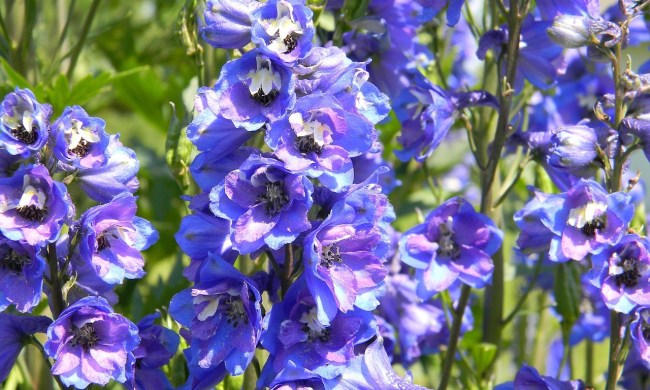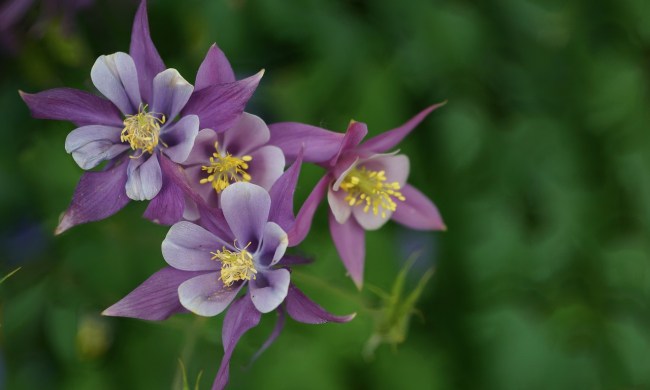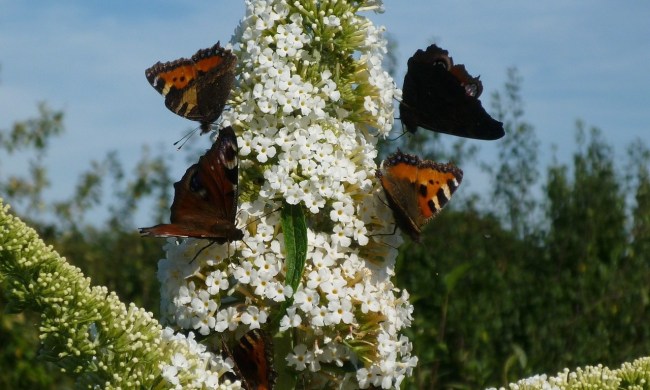There are several reasons you might want to add a shrub to your garden. They can have gorgeous flowers, they keep your garden from looking bare during winter, they create a small privacy hedge, and they even benefit your local wildlife. While fruit may not be at the top of your list of reasons, we have a shrub that might change your mind on that! Beautyberry shrubs, true to their name, have incredibly beautiful berries. Want to grow your own? Here’s what you need to know about growing a beautyberry shrub and how to care for your beautyberry in winter.
What are beautyberry shrubs?

Beautyberry shrubs are a group of shrubs in the Callicarpa genus with a fairly wide native range. There are species native to North America, South America, Australia, and most of Asia. There are both evergreen and deciduous varieties, and the berries are technically edible (although the raw berries have an unpleasant flavor). Callicarpa americana, the American beautyberry, is found primarily in the southeastern U.S. It’s a deciduous species, and the berries are sometimes used to make a jam that is much tastier than the raw berries.
If you’re not a fan of making your own jelly, then you’ll be happy to know that the berries are also beneficial for your local bird population. The berries will stay on the bush for a long time, lasting well into winter, meaning they are an available food source when most other plants have run out of berries or seeds. Planting a beautyberry bush is a great way to attract birds to your yard, especially in late winter when you might be in need of the joy that comes with seeing a bird.
How and when to plant beautyberries

Beautyberries can grow from seed, but the quickest way to get a beautyberry shrub is to start with a sapling or young shrub from a nursery. You can plant these nursery saplings in spring or fall, while seeds are best started indoors during winter and transplanted into your garden in spring. If you choose a nursery plant, be sure you’re getting Callicarpa americana, not Callicarpa dichotoma. C. dichotoma is commonly found in nurseries, and while it is hardy and beautiful, it isn’t native.
Choose a planting site with well-draining soil. Beautyberry shrubs are not terribly picky about soil type, but if the soil is dense or particularly poor, then amending it with compost before planting is a good idea. You can also grow your beautyberry plant in a container, as these shrubs stay fairly small. Be sure the soil and container are both well draining to avoid overwatering it.
Plant your beautyberry in full sun to partial shade. Keep in mind that the more shade your beautyberry gets, the fewer flowers and berries you’ll see. So balancing sun and shade is important if you want to enjoy the vibrant berries.
Beautyberry plant care

Luckily, beautyberry shrubs are low-maintenance plants. Water your beautyberry semi-regularly for the first few months after planting, keeping the soil moist but not soggy. Once they are established, beautyberry plants can tolerate droughts, although they produce more flowers and fruit when they have access to regular water.
Beautyberry shrubs typically don’t need to be fertilized. If you have particularly poor soil, or they are growing in a container without regular repotting, then your beautyberry may need a boost. Compost is perfect for beautyberries, but you can also opt for a low dose of balanced fertilizer formulated for fruiting plants. Avoid fertilizers meant for foliage plants, as these prompt the plant to grow more leaves and fewer flowers.
Beautyberry winter care

Caring for your beautyberry in winter is as simple as caring for it during spring and summer. Reduce the frequency of your waterings during winter as your shrub goes into dormancy. Avoid fertilizing your beautyberry during winter, as it won’t be able to absorb any nutrients while dormant.
The primary difference in caring for your beautyberry in winter is pruning. Since the flowers and berries grow on new branches, pruning your beautyberry makes room for new growth, ensuring a large harvest. Use sharp, clean shears, and wait until late winter or early spring to begin pruning. Otherwise, you’ll be cutting off branches still laden with berries. Prune no more than one-third of the plant, or else you might stress your plant. Focus on damaged or diseased branches first, then remove a few older branches to free up space and trim the ends of branches so the shrub is the size and shape you want.
Beautyberry shrubs are a great addition to winter gardens. They attract birds, brighten up the landscape, and can even be used to make a tasty jam. They’re easy to grow, and now that you’re familiar with their basic care needs, you can add one (or more) to your yard or garden this year.




